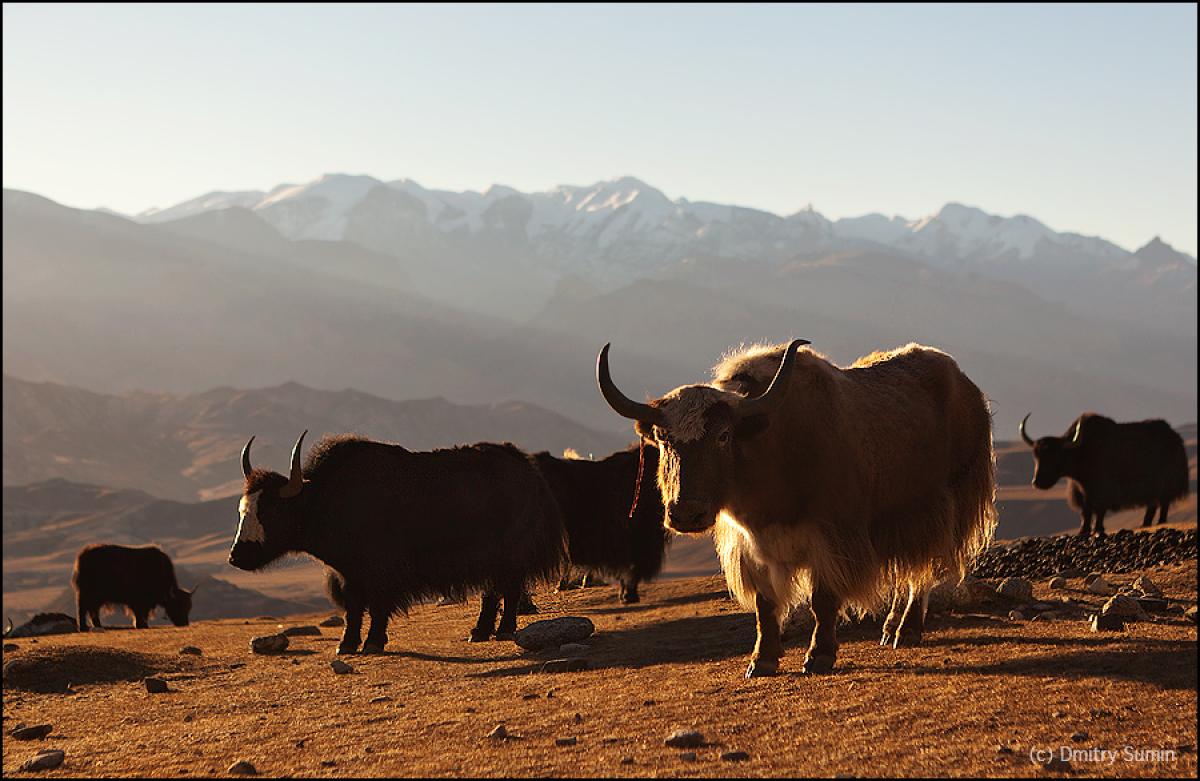Take a trip to Asia with me, and we’ll journey to “the roof of the world.” So nicknamed because of its incredible elevation, this huge swath of land is more formally called the Tibetan Plateau. Surrounded by mountain ranges, including the Himalayas, the Plateau reaches into the sky, sitting more than three miles over sea level.
I see you’ve brought your suitcases. While I’m glad you’re ready to go, we may need some help as we travel the harsh steppe. That’s why I’ve rounded up some yak. More than a symbol of Tibetan culture, the yak is a hardy bovine, with shaggy fur and pointed horns. Despite the frigid, thin air, yaks thrive on the Plateau, and they’re used as a food source and pack animal. So, pack your bags on the back of the yak.
It turns out that yaks carry not just heavy loads, but a genetic secret to their survival. In a recent study, scientists in China compared cattle DNA and yaks’ DNA. One difference stood out: yaks have a never-before-seen subtype of cell in their lungs. Nestled in the lining of the lungs’ blood vessels, these cells help the vessels develop fibrous thickness, scientists think. It’s likely that the strong blood vessels, along with some other already-known genetic adaptations, help yaks breathe in the Tibetan Plateau’s low-oxygen environment.
I know you’re eager to go mountaineering on our trip, but to answer your question, no, humans, even those indigenous to the Plateau, probably don’t have this subtype of cell in their lungs. We’ll have to hoof it across the plains—even as their rugged beauty takes our breath away.










